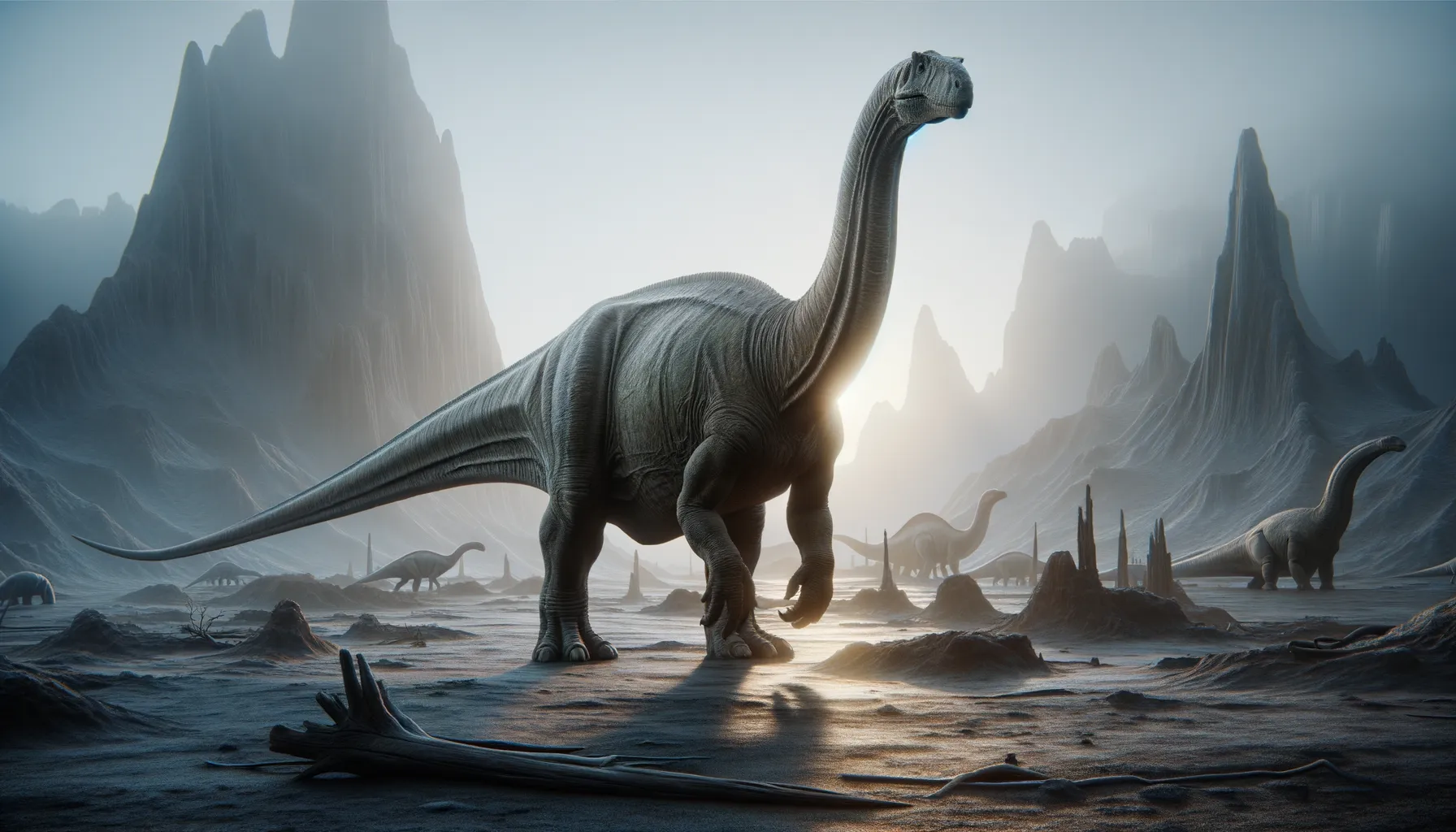
Huangshanlong
Giant of the Cretaceous Earth.
Period
Cretaceous
Length
Around 15 meters in length.
Height
Approximately 5 meters tall at the hip.
Weight
Estimated to weigh several tons.
Huangshanlong was a large, herbivorous dinosaur from the Late Cretaceous period. Known from fossil remains discovered in China, it was a part of the sauropod group, which included the largest land animals to ever exist. It was characterized by its long neck and tail, its massive body, and its small head. Nevertheless, much about Huangshanlong remains to be discovered, as the fossils unearthed are still limited.
Diet
Huangshanlong was a herbivore, meaning it mainly ate plants. Its diet likely consisted of leaves, ferns, and possibly fruits that grew in its environment.
Hunting
As a plant-eater, Huangshanlong didn't hunt but foraged for its food. It would use its long neck to reach vegetation at various heights.
Environmental challenges
Huangshanlong faced changes in climate and vegetation that could impact its food supply. Its large size required it to consume vast amounts of plants regularly. Environmental shifts in the Late Cretaceous, including volcanic activity, could have affected its habitat. Additionally, the presence of large predators posed a threat, especially to the young and vulnerable individuals.
Speed
It moved slowly, likely due to its large size.
Lifespan
It likely lived several decades if it reached maturity.
First discovery
Huangshanlong was first discovered in China in 2016.
Fun Facts
- Huangshanlong is a sauropod dinosaur, which means it belonged to the group of long-necked, herbivorous dinosaurs that were among the largest creatures to walk the Earth.
- The name 'Huangshanlong' translates to 'Huangshan dragon,' named after the Huangshan mountains in China where its fossils were discovered.
- Huangshanlong lived during the Early Cretaceous period, which was approximately 145 to 100 million years ago.
- This dinosaur is known from only a few fossils, making it a bit of a mystery and reminding us how much we still have to learn about prehistoric life.
- Unlike the famous giant sauropods like Brachiosaurus, Huangshanlong was relatively smaller, though it was still big by today's standards.
- Huangshanlong is part of the Titanosauriformes group, which includes some of the last-surviving sauropods before the mass extinction.
- Though we know very little about this dinosaur's exact appearance, its discovery expands our understanding of dinosaur diversity in Asia.
Growth and Development
Huangshanlong grew from a small hatchling into a massive adult over several decades. It likely experienced rapid growth spurts during its early years. By reaching a large size, it could evade predators and compete for resources effectively. Its development involved growing a longer neck and tail, essential for reaching food and maintaining balance.
Habitat
Huangshanlong lived in what is now China, in lush river valleys and plains. These areas would have provided ample vegetation to sustain its herbivorous diet. The environment was warm, with a mix of forests and open spaces. Over time, habitat changes occurred due to geological forces, influencing the ecosystems it depended on.
Interaction with other species
Huangshanlong shared its habitat with various species, including other herbivores and predators. It likely formed herds for protection and social interaction. It had to be vigilant against predatory dinosaurs looking for vulnerable individuals. Its large size and presence in groups probably deterred many predators from attacking.
Natural lifespan
It likely lived 50 to 80 years if it reached adulthood.
Reproduction
Huangshanlong reproduced by laying eggs, like other sauropods. Females likely laid numerous eggs at a time to increase survival chances. Hatchlings were much smaller than adults, requiring growth over many years. Eggs were possibly laid in nests made by shallow depressions in the earth.
Social behaviour
Although specific details are scarce, Huangshanlong likely exhibited some form of social behavior. Herding could offer protection against predators. Social interactions would have been essential during migration and for finding food. Young dinosaurs probably learned survival skills by staying close to older members.
Fossil locations
Fossils of Huangshanlong have been discovered in the Anhui Province of China. These finds provide valuable insights into its anatomy and the environment it lived in. The fossils are primarily found in Late Cretaceous geological formations. Ongoing research and exploration could reveal additional fossils and expand our understanding.
